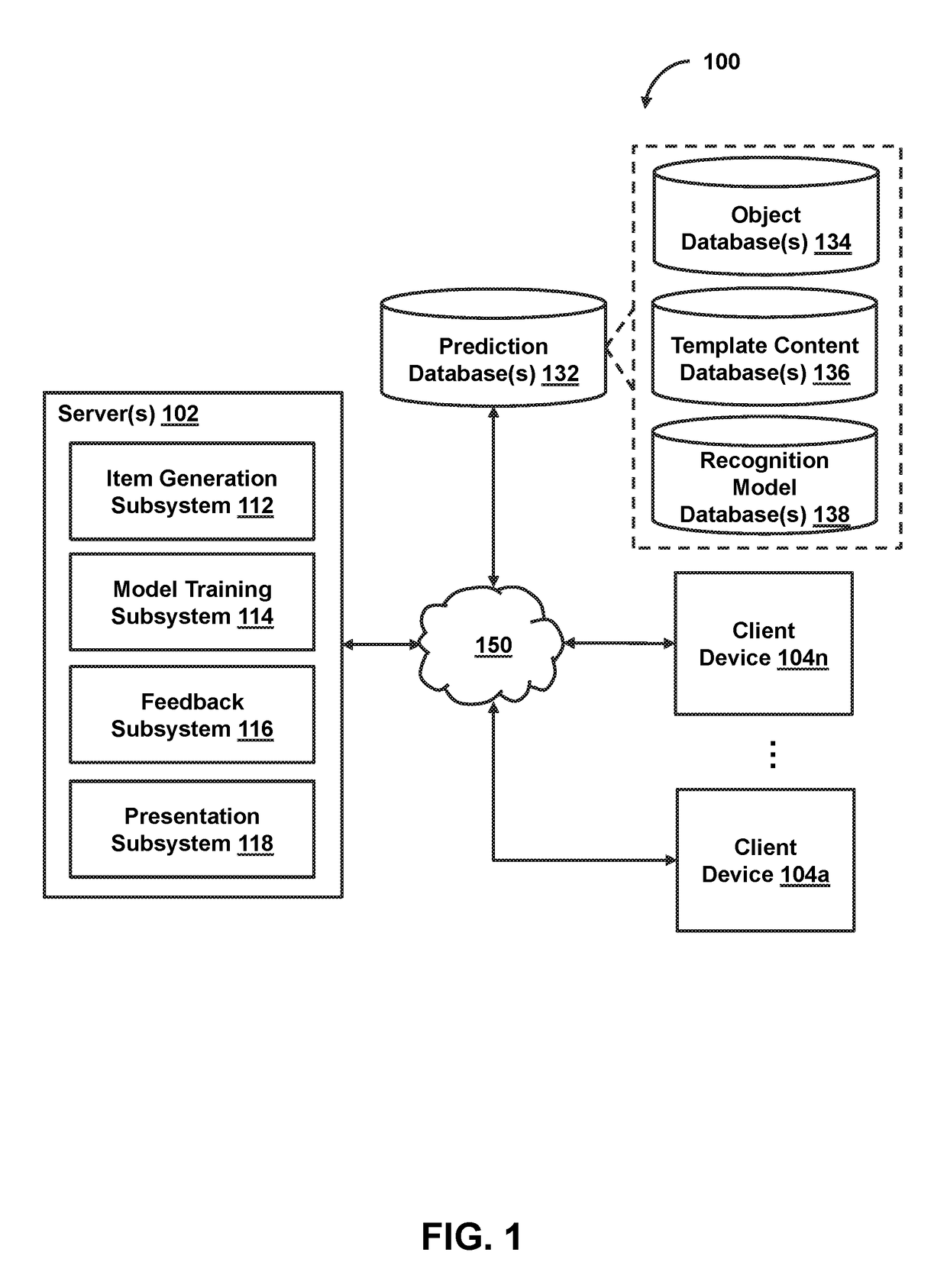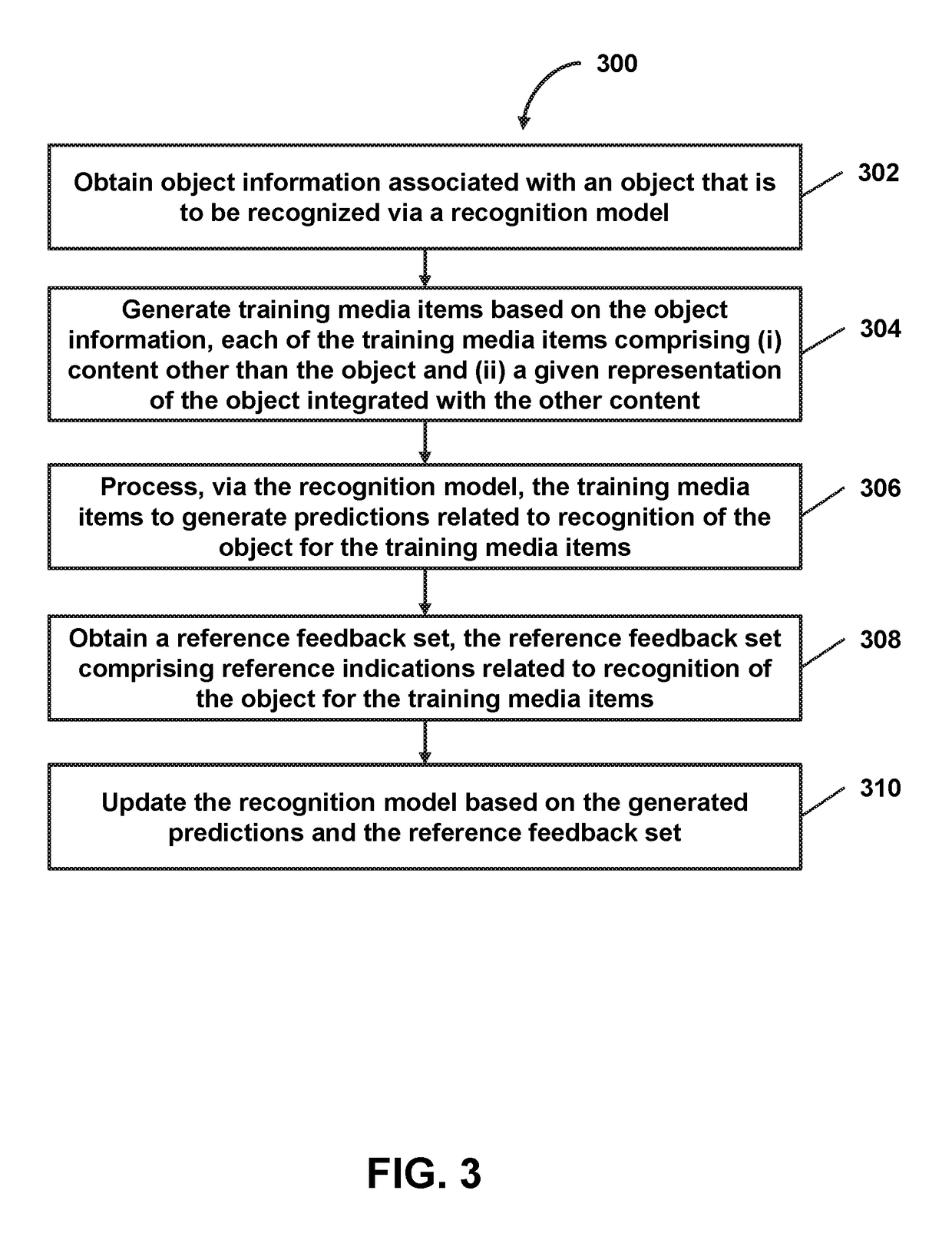System and method for facilitating logo-recognition training of a recognition model
a recognition model and model training technology, applied in image analysis, image enhancement, instruments, etc., can solve the problems of difficult or impossible to obtain large sets of images (in which a given logo appears) via computer-assisted searches and facilitate logo recognition training of a recognition model. , to achieve the effect of efficient training a recognition model, resource-intensive and/or time-consuming computer-assisted searches
- Summary
- Abstract
- Description
- Claims
- Application Information
AI Technical Summary
Benefits of technology
Problems solved by technology
Method used
Image
Examples
embodiment 1
2. The method of embodiment 1, wherein the neural network (i) determines similarities or differences between the generated predictions and their corresponding reference indications and (ii) updates the neutral network aspects based on the determined similarities or differences.
embodiment 2
3. The method of embodiment 2, wherein the reference indications comprises reference labels describing the logo respectively for at least some of the 1000 images, and the generated predictions comprises predicted labels respectively for at least some of the 1000 images.
4. The method of embodiment 2, wherein the reference indications comprises reference indications of locations of the logo in at least some of the 1000 images, and the generated predictions comprises indications of predicted locations of the logo in at least some of the 1000 images.
embodiment 4
5. The method of embodiment 4, wherein the generated location indications comprises one or more maps or boundary structures indicating predicted locations of the logo in at least some of the 1000 images.
6. The method of embodiment 1, further comprising: determining at least 100 locations at which to place a given rendering of the logo on a given image, each of the 100 locations being different from one another, wherein generating the 1000 images comprises generating at least 100 of the 1000 images based on the 100 locations such that each image of the 100 images comprises a given rendering of the logo at different one of the 100 locations.
7. The method of embodiment 1, further comprising: generating at least 100 renderings of the logo such that each of the 100 renderings of the logo has a different size from one another, wherein generating the 1000 images comprises generating at least 100 of the 1000 images such that each image of the 100 images comprises a different one of the 100 ...
PUM
 Login to View More
Login to View More Abstract
Description
Claims
Application Information
 Login to View More
Login to View More - R&D
- Intellectual Property
- Life Sciences
- Materials
- Tech Scout
- Unparalleled Data Quality
- Higher Quality Content
- 60% Fewer Hallucinations
Browse by: Latest US Patents, China's latest patents, Technical Efficacy Thesaurus, Application Domain, Technology Topic, Popular Technical Reports.
© 2025 PatSnap. All rights reserved.Legal|Privacy policy|Modern Slavery Act Transparency Statement|Sitemap|About US| Contact US: help@patsnap.com



